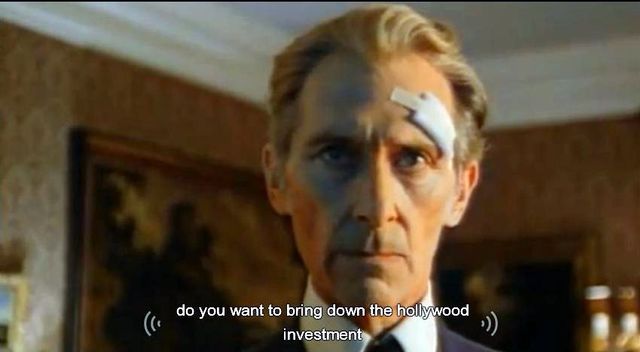A dispatch from the Encounters Short Film and Animation Festival is in the current issue of movieScope. Meanwhile, some notes of things that I don’t want to forget.
One year after I confidently predicted in this space that it was imminent, Bristol’s Watershed was named as one of the BFI’s eight regional Film Hub Lead Organisations just in time for this year’s Encounters. The many goals of the BFI Film Audience Network seem fairly occult, but since this year apparently saw growth in Encounters ticket sales, the festival and its parent venues can reasonably figure that they’ve got an audience to network with.
Obsessive readers of the small print nonetheless spotted a reduction in the total number of festival sponsors in the 2013 catalogue, especially among local supporters; Creative England, a named funder in recent years, was also absent, although that organisation’s agenda has shifted lately. Whether or not resources played any part in a subtle redirection of the programme is just outsider’s guesswork, but there were significantly fewer screenings of the actual films this year, and anyone unable to apply themselves during office hours would have been left unable to see the bulk of them. (The cost of festival screening passes duly fell, it should be noted.) This is the kind of balancing act that keeps programmers awake at night.
No one dozed off during Nicolas Chaudeurge’s on-stage BAFTA craft interview, which touched on a bunch of issues relating to film editing before roaming widely across the landscape. In value for money terms Chaudeurge was probably the most droll and quotable guest at Encounters since Bruce Robinson in 2011, and without the need to edit out the swearing. My mixed feelings about Andrea Arnold’s films are on record elsewhere, and a cynic might detect space between the lines of comments from her regular editor about the making of Wuthering Heights: “The shoot was a very strange experience from the editor’s perspective. When the emotional map of the film evades you, that’s a bad sign. The heart-wrenching was not coming together; so we shot some more trees.”
His assertion that Up In Smoke is a high-water mark that should not be confused with Cheech and Chong’s other works gets no argument from me though.
More quotable forthrightness in the panel on stop-motion cinematography, a trade which now involves digital still photography and which might perhaps be the best remaining example of modern film-making techniques encroaching onto the territory of venerable artisanship. All participants expressed ambivalence about digital techniques in general, feeling that the edges of the cinematographer’s authority had become distinctly frayed; not an angle that had occurred to me before.
Other current trends got even shorter shrift. Here for instance, Aardman regular Frank Passingham on the mysteries of High Frame Rate: “God I hope it doesn’t become a regular technique. Cinema requires a certain degree of familiarity on the part of the audience with the nature of the image they’re seeing, and HFR breaks that. The magic of cinema is just destroyed. A huge retrograde step.”
Some milder digital distrust came from live-action cinematographer Roberto Schaefer, although the arrival of the Arri Alexa had apparently more or less quashed his doubts. But his eyes still lit up most when he spoke of shooting The Paperboy on 16mm. Schaefer was a multimedia conceptual artist who drifted into the business via documentaries, and his comments on the rapid editing used in action sequences like those in Quantum Of Solace, shot for his regular collaborator Marc Forster, made it clear that he was not automatically a fan of the frenetic stuff. Understandable that those in Schaefer’s trade couch their views on editing styles in the most diplomatic and professional terms; equally understandable if those opinions are in fact quite firm.
I liked Anna Hints’s Vaba Maa/Free World, involving residents of a small Estonian village, pointedly called Memoryville, who decide that Western cultural encroachment might not be for them. For a minute I thought it was going be The Wicker Man staged by Marina Abramović, but it turns out the director’s mind is on 20th Century wounds that time won’t be healing. A small film containing vast agonies.
And I really liked Leopoldine Huyghues-Despointes, the physical presence at the heart of Atlantic Avenue because her physical body is at the heart of the plot. But director Laure de Clermont-Tonnerre opts to keep physical pain out of the film entirely, as good a way to stop a story involving disability from tipping into mawkishness as any. Instead, untethered from anything as dull as a backstory or arc, the character seems as natural as the air, while plainly feeling anything but. Atlantic Avenue walks the line between overt empathy and simple humanity, and bravely opts for the latter; at this point I appreciate any film which thinks it knows the difference.
 The Satanic Rites of Bette Davis
The Satanic Rites of Bette Davis